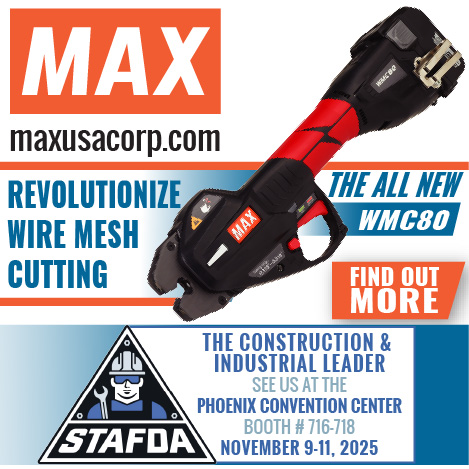Expanding Your Sales with Low Pressure Spray Polyurethane Foam
It’s not always large orders of one particular product that can make or break your profitability. Sometimes it’s the perceived “add-on” products that can grow your bottom line. When it comes to insulation and low pressure spray polyurethane foam (SPF) in particular, this rule is no different.
 Contractors embrace SPF for its unmatched air sealing and weatherization capabilities, as well as its ease of use. These are benefits that can be realized with various air sealing products – not just two-component kits – but small cans of sealants and related accessories needed to complete the job. It’s these products that often increase a contractor’s profitability, allow them to better market themselves and their insulation and home comfort capabilities, and keep them coming back to your store.
Contractors embrace SPF for its unmatched air sealing and weatherization capabilities, as well as its ease of use. These are benefits that can be realized with various air sealing products – not just two-component kits – but small cans of sealants and related accessories needed to complete the job. It’s these products that often increase a contractor’s profitability, allow them to better market themselves and their insulation and home comfort capabilities, and keep them coming back to your store.
The trick is knowing how to sell these perceived “add-ons” as part of a complete solution. Here are some simple tips to keep in mind when trying to sell products like one-component foam sealants, SPF accessories and code-compliant SPF solutions.
Offer Suggestions
Help your customers expand their offering by making suggestions during their point-of-purchase. If your customer mentions he is servicing a home’s air conditioner or heater, ask if there is an opportunity for the homeowner to add an air sealing package to the sale to minimize heating and air conditioning costs. Just by making the suggestion, you might close a sale on a one-component foam sealant. Similarly, if a customer mentions he’ll be installing new windows, ask how he’ll be sealing them and suggest a low pressure build window and door sealant as an air infiltration stopper that won’t bow the frame. Not only are you adding products to his purchase, but you’re helping him grow sales that will keep him coming back to your store. Plus, you’re building your rapport with the customer, which can be priceless.
Talk to your Customers
Understand your customers’ needs and how they’re using the insulation products they purchase. If they’re spraying foam in an attic or crawlspace, for instance, building code acceptance criteria ACC 377 appendix X allows for an ignition barrier coating to be applied in place of a thermal barrier such as gypsum board, saving both time and money. If you stock an ignition barrier product, you can immediately sell your customer on the need for the product.
If your customers are air sealing small gaps and cracks, there is no better product than a one-component foam sealant. Understanding how and where they’re focusing air sealing efforts can help you suggest appropriate products to expand your margin of sales – and theirs.
Lean on Your Supplier
Take advantage of manufacturer merchandising kick-backs. Place a call to your sales representative to see if you qualify for free merchandising displays often available for sales reaching certain quotas. Fomo Products, Inc., a leading provider of low pressure SPF solutions, for example, offers distributors with qualifying purchases display racks that house several types of polyurethane foam products, including SPF kits, sealants and adhesives, along with product literature at no additional cost. The company also offers counter displays, floor stickers, sell sheets and more. Don’t forget to run video, too, if you have the capability. Fomo will provide a DVD with various applications. Not only do these visual displays attract attention, but they prompt product questions that allow you to better sell product benefits in person.
Spark Ideas
 Show customers the many ways they can use these ancillary products. Sure, talking up a product’s use and benefits helps, but showing them makes a world of difference. When it comes to selling sealants and low pressure SPF insulation, post photos next to the products on shelves, on your website and in other areas to show application areas such as rim joists, recessed can lights and attic baffles. This might trigger awareness of other ways the contractor can use the products, and may result in additional sales of sealants and complementary products like can light covers and baffles. Remember to promote product stewardship and proper personal protective equipment; this will not only keep your customers safe, it can often lead to easy additional sales of respirators, nitrile gloves and goggles.
Show customers the many ways they can use these ancillary products. Sure, talking up a product’s use and benefits helps, but showing them makes a world of difference. When it comes to selling sealants and low pressure SPF insulation, post photos next to the products on shelves, on your website and in other areas to show application areas such as rim joists, recessed can lights and attic baffles. This might trigger awareness of other ways the contractor can use the products, and may result in additional sales of sealants and complementary products like can light covers and baffles. Remember to promote product stewardship and proper personal protective equipment; this will not only keep your customers safe, it can often lead to easy additional sales of respirators, nitrile gloves and goggles.
Educate Your Customers . . . and Your Staff
You can’t close a sale if a customer doesn’t understand why he should invest in a certain product. Host contractor education events, and invite your SPF supplier to lead discussions on topics like weatherization applications, sealants and ignition barriers, or suggest your customers participate in supplier training to learn more. Fomo, for example, offers an online university where contractors can learn about the low pressure SPF products you likely offer, as well as the best ways to use them. Not only is this helpful for contractors, but it’s helpful for your staff.
You also can send out newsletters or sales flyers when a new product is stocked or a new building regulation is passed. Education goes a long way in closing a sale – especially for add-on products. Ask your sales rep or supplier for a quick write-up on the product so you can best help your customers understand it.
Though these may seem like relatively simple sales tactics, they often are overlooked during busy times when we’re eager to close that big sale. Take every opportunity to make every sale a big sale. When it comes to insulation, low pressure SPF can go a long way in increasing your sales and your customers’. Don’t stop at offering two-component kits. When positioned correctly, sealants and low pressure SPF products and accessories can mean a marked change in your bottom line. CS
This article was provided by Brian Kantor, vice president of sales, Fomo Products, Inc. To learn more about Fomo products, visit www.fomo.com or call 800-321-5585.

Quick Guide – What to Use, When:
Window and Door Sealant – As the name implies, use a closed-cell window and door sealant with a low pressure build when installing windows and doors. It creates an air seal and will not bow the openings.
One-Component Polyurethane Foam Sealant – Use to seal and fill small cracks, gaps and voids; serves as a great replacement for caulk. One can of Handi-Foam® Polyurethane Foam Sealant replaces approximately 30 standard tubes of caulk.
Fireblock Sealant – Use when required by residential code to block the passage of flame and smoke in concealed penetrations from room to room and floor to floor in residential type five construction.
Extreme Climate Sealants – If you’re in an area with an extreme climate, opt to carry a specialty sealant like Handi-Foam Extreme, specially formulated for extreme temperatures and low humidity conditions.
Ignition Barrier – Specialty product used to meet ignition barrier and building code requirements for exposed foam in attics and crawlspaces. Check your local codes so you can best guide your customers.
Roof Patch – Use to repair pin holes, cracks and patch polyurethane roofs after equipment changes.
Low Pressure Spray Polyurethane Foam (SPF) – Use in various applications to stop air infiltration and insulate large voids and surfaces. When used in conjunction with fiberglass or cellulose as a flash-and-batt hybrid method provides the air seal needed as well as the R-value and promotes energy efficiency in the most cost effective way possible.
Other Add-on Products:
Handi-Cleaner - Dissolves uncured foam; use for general cleaning purposes.
Baffles - Use to keep air flowing through an attic, preventing insulation from clogging lower ventilation and decreasing moisture build-up that can eventually lead to mold and rotting.
Can Light Covers - Recessed can lights create open holes into an attic, preventing a proper air seal. Air sealing with low pressure SPF around a can light cover helps keep a home insulated while keeping the insulating material away from the heat source.
















